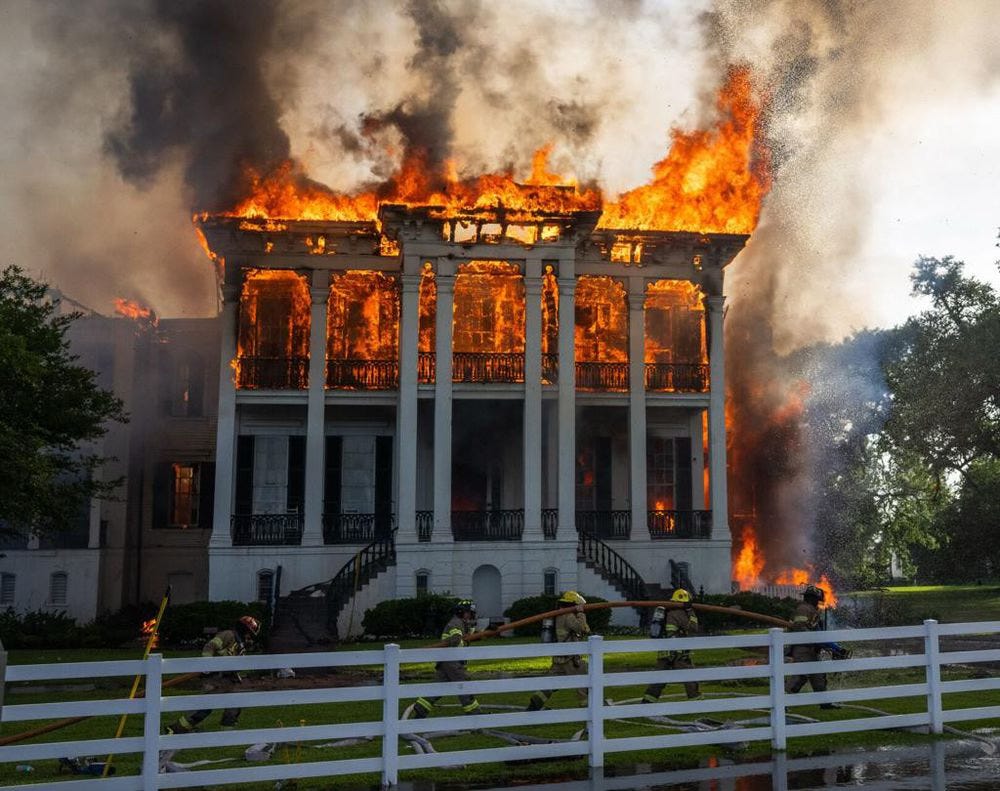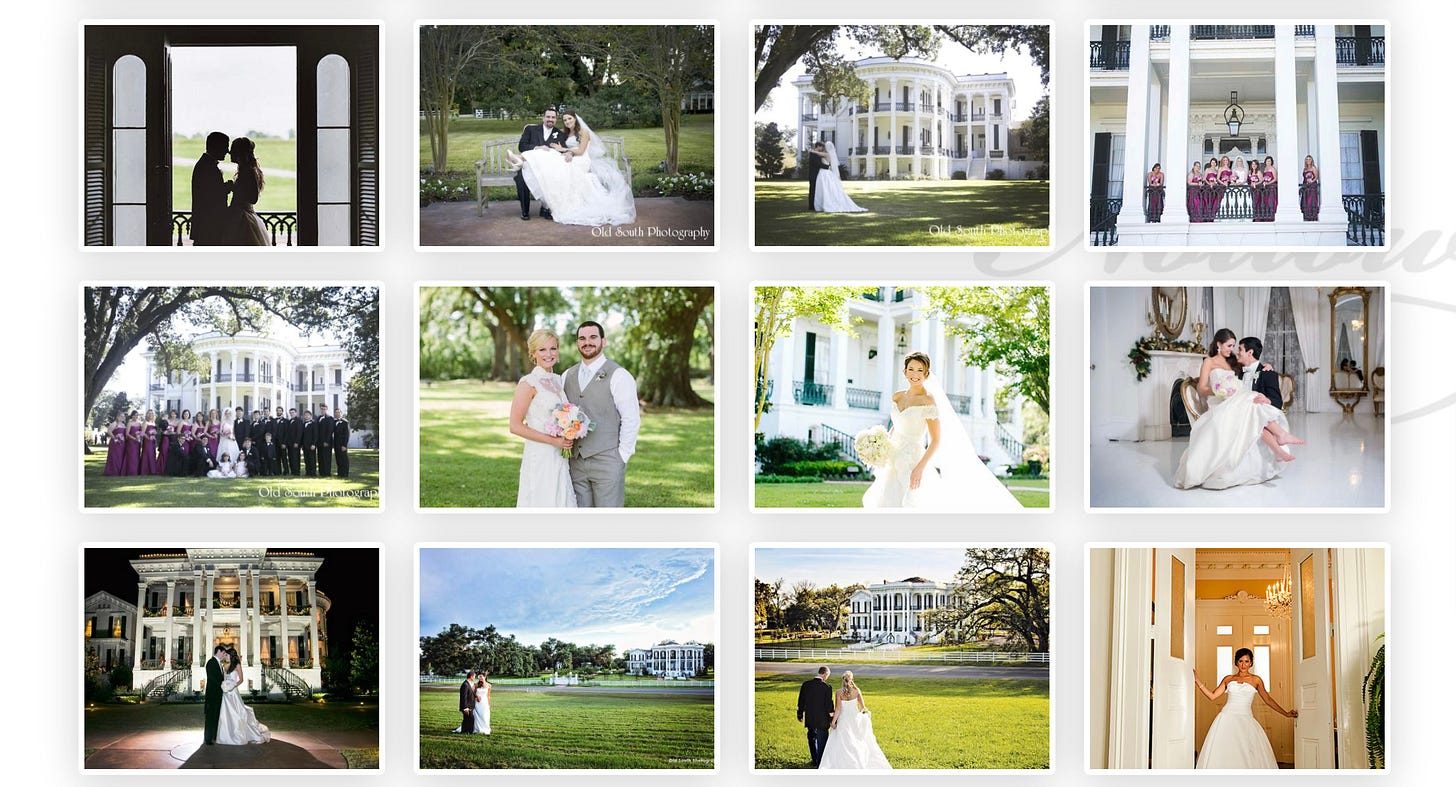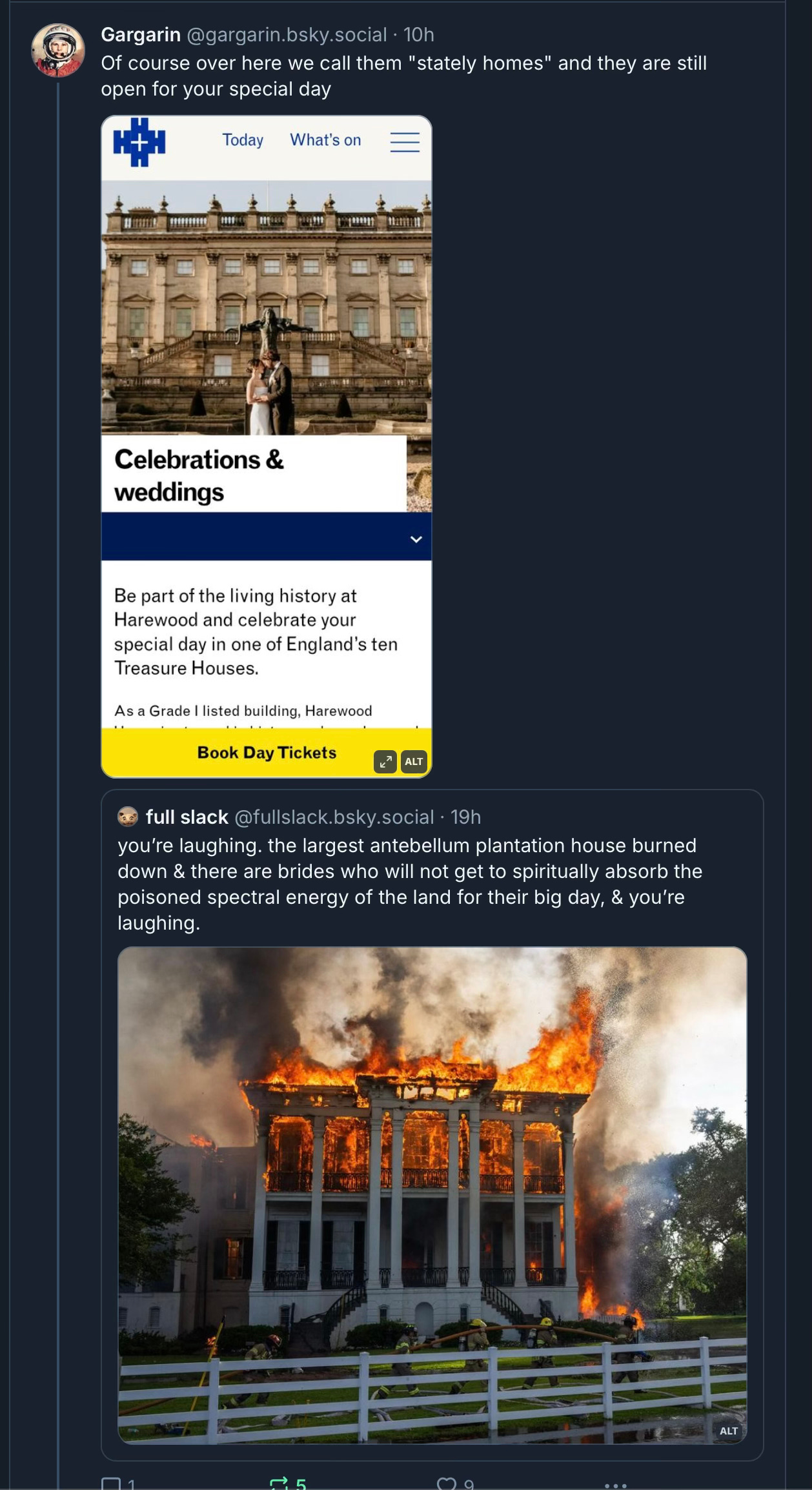It’s not often that the title of your forthcoming book becomes a trending topic on social media, but this weekend it has been.
Above is Nottaway Plantation in North Carolina, which was, until now, the largest remaining plantation house in the United States. But the loss of a historic property has not been greeted with unmitigated dismay.
I particularly like the fact that the woman on the left is a Disaster Recovery Specialist, but I don’t think she’ll be offering her expertise to this place any time soon.
That’s because Nottoway, although it had become a hotel and wedding destination which also offered tours, was not just built from the profits of slavery, but constructed by enslaved workers with quarters for them built into the plan. No wonder quite a few people were happy to see it burn.
You could argue that - as the actual site where enslaved people were kept and worked - it is very different to the houses we have in this country, which are simply (“only”) built from the profits made from plantations elsewhere.
But one of the strong themes that has emerged from the coverage, is a sense of complete surprise, bordering on revulsion, that people wanted to get married in a place which was home to that kind of history.
Pinterest was thoroughly rifled for proof, but there’s plenty enough on Nottoway’s website too.
Note that all these couples are white.
One person brought the question home though.
As I’ve said above, there are differences - one of the reasons that the British have managed to avoid a reckoning with their treatment of other people throughout colonisation and Empire is that all the bad stuff was, mostly, made to happen in far away places.
But does this make it OK to still get married in Harewood, however lovely the backdrop might be? I am not sure it does.
This post has two slight footnotes, neither of which are big enough to make a post on their own so you are just going to have to put up with them here.
The first is that I am endlessly intrigued, and a bit bewildered, by the fact that the stately home wedding industry is so huge. As far as I have been able to find out, this is mostly because they are cheaper than hotels, you get exclusive use and they look nice (I beg to differ). But I can’t help thinking that something more is going on here, not least because people get quite cross when I ask why they are so popular, which is usually a sign of something interesting going on. If you have any thoughts on this, please do say.
The second is the odd, let’s call it coincidence, around two of the houses which have strong connections with slavery and colonialism. Dodington House in Gloucestershire was built by the Codrington family with the vast profits from their sugar plantations, run by enslaved workers. Also in Gloucestershire, Daylesford House was build by Warren Hastings, who basically took over India on behalf of a private firm, the East India Company (as William Dalrymple says, it’s as though Amazon had a standing army). These two houses are now owned respectively by James Dyson and the Bamford family, owners of JCB and donors to, amongst other things, Boris Johnson’s wedding. I have nothing else to add here.
Finally, and just because I can, this is Rex Whistler’s prefiguring of everything, produced for the cover of a book called The Last of Uptake.









I’m not shedding a tear for Nottoway or for anyone’s cancelled Confederate cosplay wedding. I visited a couple of plantations (aka slave labor camps) on the River Road outside New Orleans many years ago, when there was no mention of slaves or slave quarters. Fortunately, Whitney Plantation (whitneyplantation.org) addresses its history head on. Naturally, they’ve gotten a lot of pushback from disgruntled folks looking for a more sanitized version.